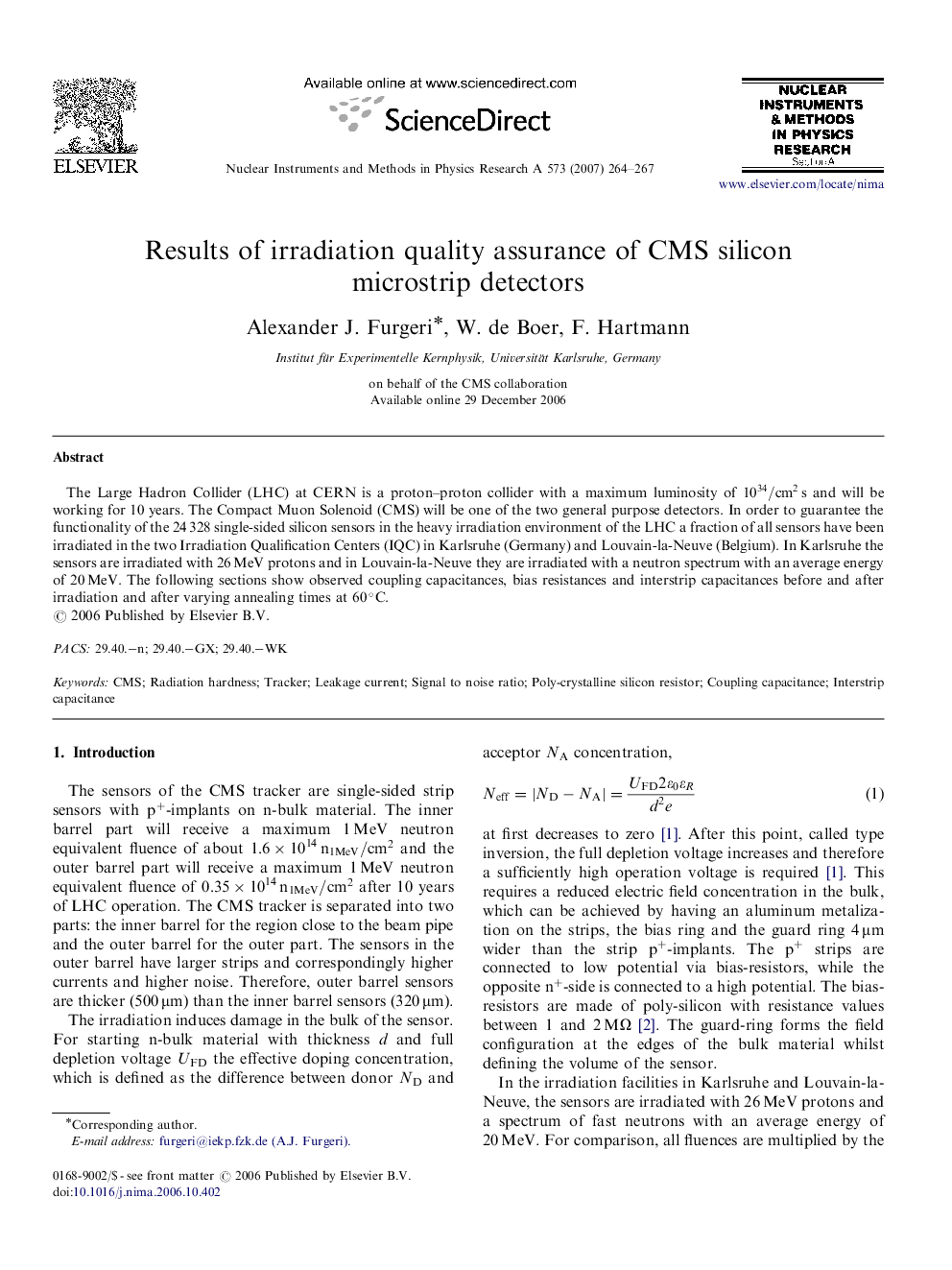| Article ID | Journal | Published Year | Pages | File Type |
|---|---|---|---|---|
| 1831032 | Nuclear Instruments and Methods in Physics Research Section A: Accelerators, Spectrometers, Detectors and Associated Equipment | 2007 | 4 Pages |
The Large Hadron Collider (LHC) at CERN is a proton–proton collider with a maximum luminosity of 1034/cm2s and will be working for 10 years. The Compact Muon Solenoid (CMS) will be one of the two general purpose detectors. In order to guarantee the functionality of the 24 328 single-sided silicon sensors in the heavy irradiation environment of the LHC a fraction of all sensors have been irradiated in the two Irradiation Qualification Centers (IQC) in Karlsruhe (Germany) and Louvain-la-Neuve (Belgium). In Karlsruhe the sensors are irradiated with 26 MeV protons and in Louvain-la-Neuve they are irradiated with a neutron spectrum with an average energy of 20 MeV. The following sections show observed coupling capacitances, bias resistances and interstrip capacitances before and after irradiation and after varying annealing times at 60∘C.
